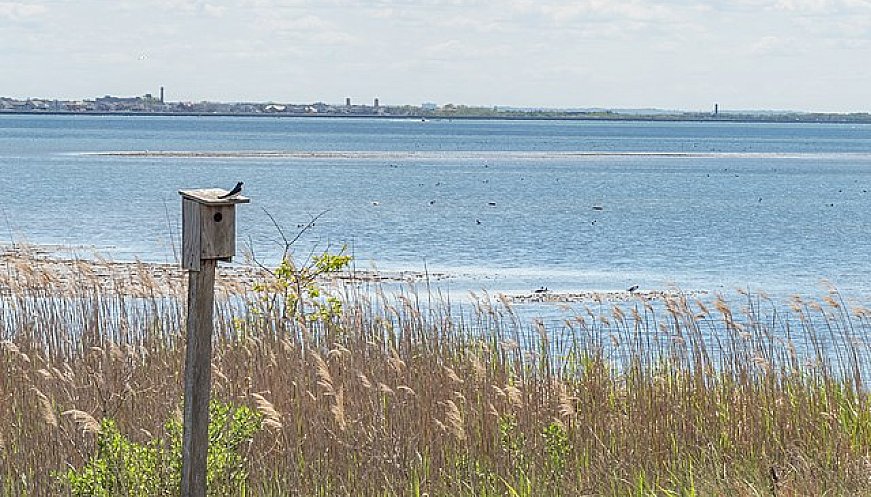 Photo: Rhododendrites | Wikimedia Commons
Photo: Rhododendrites | Wikimedia Commons
Superstorm Sandy turned West Pond—a National Park Service wildlife refuge and one of the few freshwater stops for migrating birds in the New York City region—into a tidal lagoon. Now, a "living shoreline" restoration project is showing signs that new marsh grasses, protected by degradable jetties, could be a prototype for other coastal resiliency projects. Beginning in May 2021 and ending in November, 44,000 cubic yards of sand were added to create nine acres of new marsh habitat, and more than 200,000 native grass species were planted. The spring of 2022 was the first growing season and thus an important benchmark for the $4 million endeavor funded by both private donations and city, state, and federal funds. So far, over 93% of the grasses survived, and some 13,000 more plants will be added this summer to make up for winter losses. The goal is to have 80% survival in three years' time.
More:














